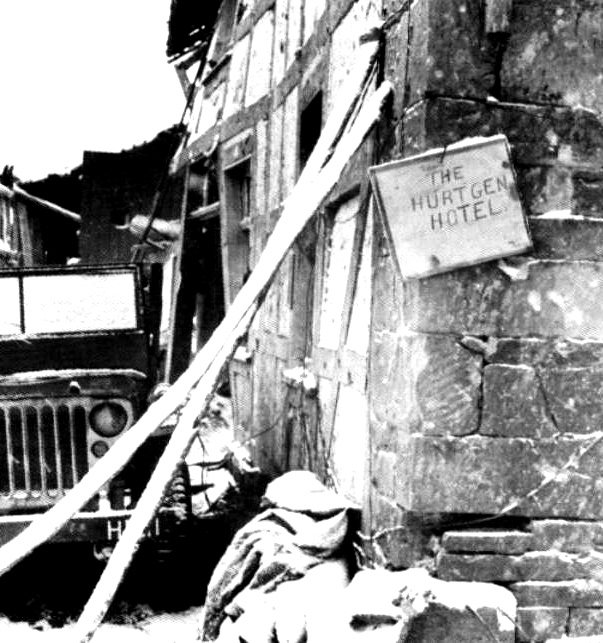Before proceeding further it is important to establish the strategic environment that existed from Sept to Dec 1944. It is easy in today’s age of computers and satellite communications to lose perspective of military operations in 1944. The infantry force the entire ground combat force was only one element of America’s war effort. Understanding the enormity of that effort is essential to the analysis of the decisions that shaped the personnel system in the ETO. The American infantry divisions of WW-2 were products of the largest military mobilization effort in the nation’s history. America’s total military force stood at over 11.000.000 soldiers, sailors, airmen, and marines by Sept 1944. In comparison, America’s mobilization effort for WW-1 totaled less than 5.000.000 personnel America’s most recent effort, the Gulf War, was less than one-fifth the size. Equally enormous was the worldwide nature of America’s military operations in WW-2. At the peak of combat in 1944-1945 the armed forces fought in six major theaters that spanned the globe. America also operated a massive worldwide logistical infrastructure that supported both American and Allied forces. By any standard of measure, America’s war effort was an incredible accomplishment.
The US Army was the largest service component of the armed forces and in Sept 1944 consisted of approximately 8.000.000 soldiers and airmen. Of this figure, slightly more than 2.000.000 men served in the ground combat forces (AGF). Ground combat forces included both divisional and non-divisional combat units as well as the combat service support units found within divisions; from this total, the army organized 89 combat divisions. The infantry force, to include airborne, dismounted cavalry, and mountain, comprised 73 divisions. Total strength in infantry personnel for these divisions and including separate infantry regiments and the infantry battalions assigned to armor divisions was less than 850.000 soldiers. The actual infantry strength of the army was approximately 11 percent of the overall force structure. Separating out the USAAF, infantry formed approximately 17 percent of the 4.900.000 man army ground force and 39 percent of the ground combat force. In the ETO, 47 infantry divisions, nine separate infantry regiments, two armored infantry regiments, and 39 armored infantry battalions comprised the infantry force. Infantry represented 16 percent of the total army strength in theater and 36 of the ground combat force.
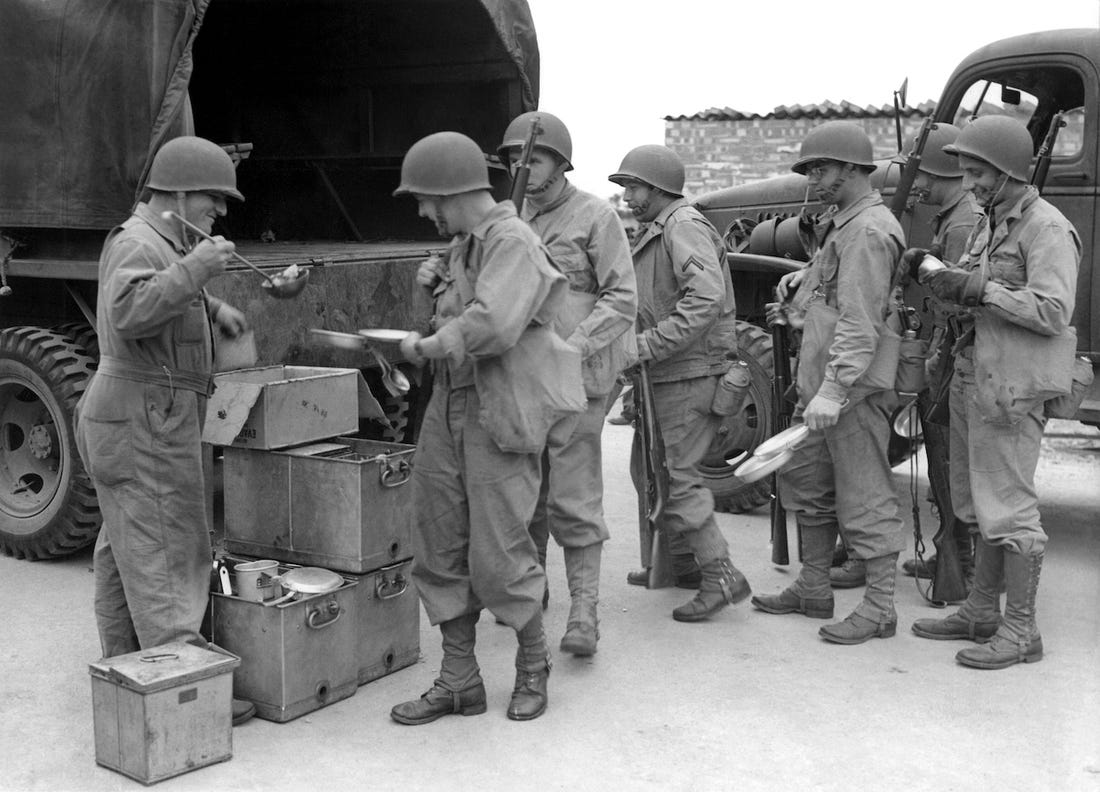 The other major element of the strategic environment was the transportation effort required to move army elements to the overseas theaters. This was a monumental undertaking, particularly given the strength and effectiveness of German U-Boat forces in 1942-1943. With the exception of long range bombers, virtually every soldier and every piece of equipment had to move by sea. A standard infantry division required some 35.000 shipping tons to deploy overseas and required additional shipping to sustain it in combat. The total shipping required to support a large theater totaled almost one ton per man per month. More than 2.000.000 tons of supplies poured into the ETO during the last half of 1944. Even within theaters there were transportation considerations.
The other major element of the strategic environment was the transportation effort required to move army elements to the overseas theaters. This was a monumental undertaking, particularly given the strength and effectiveness of German U-Boat forces in 1942-1943. With the exception of long range bombers, virtually every soldier and every piece of equipment had to move by sea. A standard infantry division required some 35.000 shipping tons to deploy overseas and required additional shipping to sustain it in combat. The total shipping required to support a large theater totaled almost one ton per man per month. More than 2.000.000 tons of supplies poured into the ETO during the last half of 1944. Even within theaters there were transportation considerations.
In Nov 1944 the ETOUSA commander, Gen Dwight D. Eisenhower, had a total of 41 American divisions in the theater. Deployed on the continent in the combat zone were only 34 divisions. Some of these non-committed divisions constituted a theater reserve but the majority were held back because of the inability to fully sustain the forces already in combat on the continent. From the strategic perspective, the army’s senior leadership faced an overriding challenge of balancing war aims and objectives with available military manpower and transportation. The heart of the challenge was to accurately determine the force structure required to achieve future strategic objectives. Resources, particularly personnel, had to then be allocated to make that force structure a reality.
This all took time and unfortunately for the planners the strategic plans constantly changed.
 The army never seriously considered in early 1942 that in the near future it would have to fight in North Africa or Italy, such changes drove the army to repeatedly alter its force structure. In one month the army needed 50 truck companies; the next month it needed 200 and it needed them right away. The bill payer for these changes was all too often the combat units. Commanders in the ground forces became alarmed by the ever shrinking combat force, not only of infantry, but of all the ground combat arms. Ground combat forces dropped from 52% of the total army in 1941 to 33 % in 1944. In contrast, the Army Service Forces (ASF) expanded from 26% to 38%.
The army never seriously considered in early 1942 that in the near future it would have to fight in North Africa or Italy, such changes drove the army to repeatedly alter its force structure. In one month the army needed 50 truck companies; the next month it needed 200 and it needed them right away. The bill payer for these changes was all too often the combat units. Commanders in the ground forces became alarmed by the ever shrinking combat force, not only of infantry, but of all the ground combat arms. Ground combat forces dropped from 52% of the total army in 1941 to 33 % in 1944. In contrast, the Army Service Forces (ASF) expanded from 26% to 38%.
Explaining the small size of this combat force, the operations division of the War Department observed : the small size of the ground combat force is a natural result of a diminishing need in the actual numbers of assault troops due to mechanization of the Army, i.e., the great masses of armor airplanes that prepare the way for the final assault of the foot soldier with resultant saving of human life. While decreasing the actual number of assault troops needed in battle, these engines of war require a large and more extensive line of communication. The assault trooper is still the cornerstone of the offensive. However, mechanization has made him more efficient in the carrying out of his duties and he is not now needed in the great numbers formerly demanded when assaults consisted mainly of human blows against defended positions.
This explanation illustrates quite clearly the mind set that permeated much of the strategic planning staff of the US Army. Combat troops were the ‘cornerstone’ of offensive operations but they were not needed in large numbers. Instead it was the air and service support branches that had to grow to meet the demands of modern warfare. The decision to organize only 89 combat divisions is easy to understand in the light of this rationale. The tough infantry combat that characterized almost every theater of operations disproved the soundness of the War Department’s fixation on the mechanization of war. Planners saw machines paving the way for the infantry, but too often it was the infantry that had to pave the way for machines.
 The tough fighting in Italy during 1943 and early 1944 opened the eyes of many to the limitations of machines. The same was true in the ETO, particularly during the grim months of Sept to Dec 1944. The army had to cannibalize stateside divisions and hastily convert personnel from a wide variety of specialties to meet the demands for infantry replacements. Closely tied to the issue of size of the ground combat force was the aspect of transportation. With vast requirements for shipping, the army had to make tough decisions on what forces went overseas and when. The combat divisions did not necessarily receive the highest priority for overseas movement. In Nov 1944, 13 infantry and three armored divisions still awaited overseas movement from the USA. Coupled with the transportation limitations that existed in the ETO, it is easy to understand why the 28-ID had to occupy a 25-mile sector after its mauling in the Hürtgen Forest. It is also easy to understand why six American infantry divisions exceeded 270 days of combat in less than a year of active campaigning. The small number of divisions and the slowness with which they moved overseas had a tremendous influence on small units and the individual soldier.
The tough fighting in Italy during 1943 and early 1944 opened the eyes of many to the limitations of machines. The same was true in the ETO, particularly during the grim months of Sept to Dec 1944. The army had to cannibalize stateside divisions and hastily convert personnel from a wide variety of specialties to meet the demands for infantry replacements. Closely tied to the issue of size of the ground combat force was the aspect of transportation. With vast requirements for shipping, the army had to make tough decisions on what forces went overseas and when. The combat divisions did not necessarily receive the highest priority for overseas movement. In Nov 1944, 13 infantry and three armored divisions still awaited overseas movement from the USA. Coupled with the transportation limitations that existed in the ETO, it is easy to understand why the 28-ID had to occupy a 25-mile sector after its mauling in the Hürtgen Forest. It is also easy to understand why six American infantry divisions exceeded 270 days of combat in less than a year of active campaigning. The small number of divisions and the slowness with which they moved overseas had a tremendous influence on small units and the individual soldier.
The official history of the army ground forces ultimately concluded: during periods of active combat an infantry division suffered about 100 percent casualties in its infantry regiments every three months. While the gaps caused by these losses were generally filled by the continuous stream of replacements, divisions suffered in efficiency with such a high turnover of infantry. A severe mental strain was imposed on the individual soldier, especially the infantryman, who felt that no matter how long he fought or how long he survived the dangers of combat he must remain in action until removed as a casualty. Cases of battle neurosis multiplied from this cause. Or men simply became tired, and when tired more easily got themselves killed, wounded, or captured. The stream of replacements thus flowed into somewhat leaky vessels. Had more units been available to relieve units in battle, not only would the strain of combat soldiers have been eased, but some saving of manpower would probably have resulted. Unfortunately for infantry units, quantity of personnel was not the only factor considered in the allocation of available manpower. The War Department also allocated personnel to the branches on the basis of quality. For much of the war the ASF and the AAF received a dis-proportionally high percentage of the highest quality recruits available to the army. Prior to 1944, 43.6% of the recruits assigned to the infantry scored in the lowest two mental categories of the Army General Classification Test (AGCT). This compares unfavorably to the AAF which had only 20.3% in the lowest categories, and to the ASF which averaged less than 30%.
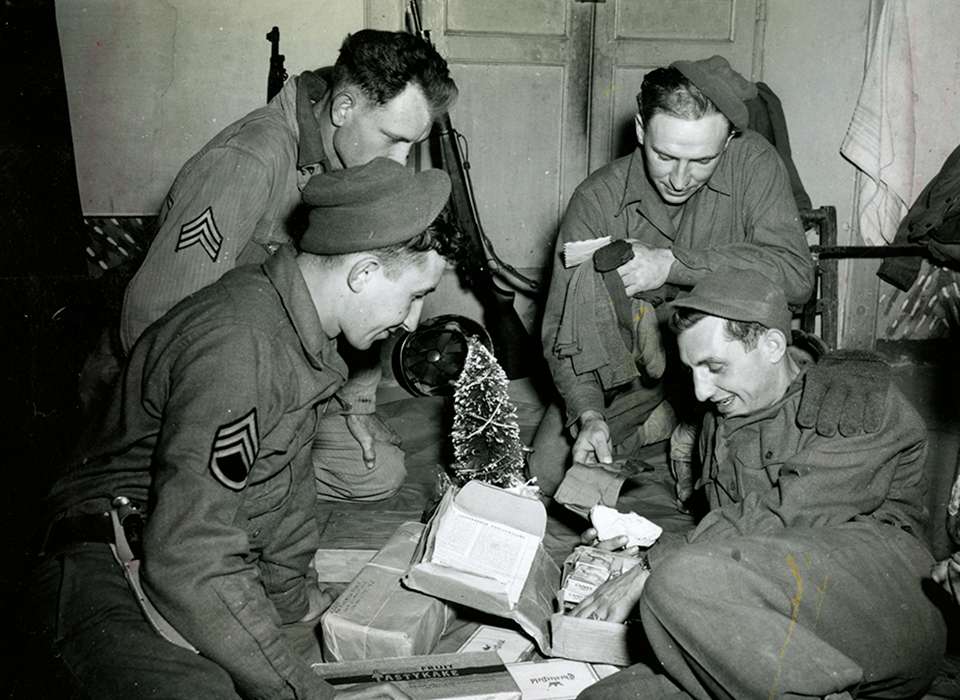 In the highest two categories the differences were equally pronounced. Only 27% of the infantry was in the upper categories, compared to 42% and 52% in the AAF and ASF respectively. Infantry recruits were also likely to have less education, be shorter and weigh less than recruits in the ASF or AAF. There were numerous reasons for such disparities. Some were deliberate acts of policy while others were the result off laws in the system. The fixation on mechanization in the War Department continued to manifest itself in the allocation of high quality recruits. Both the AAF and the ASF convinced the War Department of the unique demands of their services. Their argument claimed that advanced and expensive machinery demanded the highest quality personnel to operate and maintain it. The War Department also made allocations based on the need for rapid expansion of the AAF and ASF during 1942, while it envisioned that the infantry would have a longer time to prepare for combat. A rapid expansion required soldiers who could learn quickly and operate with little supervision.
In the highest two categories the differences were equally pronounced. Only 27% of the infantry was in the upper categories, compared to 42% and 52% in the AAF and ASF respectively. Infantry recruits were also likely to have less education, be shorter and weigh less than recruits in the ASF or AAF. There were numerous reasons for such disparities. Some were deliberate acts of policy while others were the result off laws in the system. The fixation on mechanization in the War Department continued to manifest itself in the allocation of high quality recruits. Both the AAF and the ASF convinced the War Department of the unique demands of their services. Their argument claimed that advanced and expensive machinery demanded the highest quality personnel to operate and maintain it. The War Department also made allocations based on the need for rapid expansion of the AAF and ASF during 1942, while it envisioned that the infantry would have a longer time to prepare for combat. A rapid expansion required soldiers who could learn quickly and operate with little supervision.
It was also desirable from an efficiency standpoint to tap in to the large reservoir of personnel that already possessed technical skills. A mechanic or a plumber in the civilian world required little training to be a mechanic or plumber in the army. Unfortunately for the infantry there were precious few civilian skills that translated to the combat specialties. Thus the supposed best use of a craftsman who might have made an excellent rifle squad leader, was in the technical branches. Segregating personnel by occupational skills classification hurt the combat arms. The ASF, which ran the induction and reception centers, received carte blanche to draw upon personnel with occupational skills.
 This was above and beyond the distribution based on AGCT scores. Efficiency was not the only reason the army placed such importance on classification testing. Also important was the satisfaction of soldiers. A satisfied soldier was a happy soldier; a happy soldier was a productive soldier and productive soldiers were what the army wanted. A happy and productive soldier was also likely to be a potential voter that did not complain to his congressman.
This was above and beyond the distribution based on AGCT scores. Efficiency was not the only reason the army placed such importance on classification testing. Also important was the satisfaction of soldiers. A satisfied soldier was a happy soldier; a happy soldier was a productive soldier and productive soldiers were what the army wanted. A happy and productive soldier was also likely to be a potential voter that did not complain to his congressman.
In the early days of the mobilization effort, the army had to deal with queries from congressmen who wanted to know why Private Smith, a member of their district and a skilled carpenter was now a rifleman in an infantry company. The army certainly attempted to forestall such questions but it was likely that the perceived efficiency of occupational classification was what kept it as a primary element of the overall classification process until well into the war.
Other vagaries in the reception and processing of personnel added to the quality differential as mentioned, the ASF operated the induction and reception centers and was able to use this for its benefit.The AAF enjoyed a considerable advantage in its selection of aviation cadets. These cadets came from volunteers throughout the army and had to meet mental and physical standards higher than those required for OCS (Officer Candidat School). Those cadets that failed to meet the standards for aircrew did not return to their former units, nor even their former specialties.
 Instead, the AAF retrained these men for a variety of service positions. An infantry unit could therefore lose a soldier with OCS or NCO potential who might very well end up as aircraft engine mechanic or truck driver. It was not until 1944 that this policy ended and the AAF had to restrict recruiting to within its branch. Not to be discounted in the distribution of personnel was the unpopularity that infantry enjoyed not only with recruits, but with infantrymen in units. Infantry was the least popular branch in the army, only 11% of the soldiers in that branch desired infantry. Reason cited in surveys included the physical danger and hardships, as well as a lack of publicity and meaningful vocational training. It also did not help that infantrymen were among the lowest paid soldiers in the army. Technicians received technical pay and worked in specialties that offered more room for promotion.
Instead, the AAF retrained these men for a variety of service positions. An infantry unit could therefore lose a soldier with OCS or NCO potential who might very well end up as aircraft engine mechanic or truck driver. It was not until 1944 that this policy ended and the AAF had to restrict recruiting to within its branch. Not to be discounted in the distribution of personnel was the unpopularity that infantry enjoyed not only with recruits, but with infantrymen in units. Infantry was the least popular branch in the army, only 11% of the soldiers in that branch desired infantry. Reason cited in surveys included the physical danger and hardships, as well as a lack of publicity and meaningful vocational training. It also did not help that infantrymen were among the lowest paid soldiers in the army. Technicians received technical pay and worked in specialties that offered more room for promotion.
In 1943, the average soldier in the air corps earned more than $1100.00 per year, not including flight pay and in the ordnance branch a soldier earned $825.00 per year; the average infantryman earned only $700 per year. That the War Department denied the infantry and combat arms a fair proportion of the highest quality manpower is seemingly at odds with its vision of the modem battiefield. It would seem logical that a shrinking combat arm would require an increase in the caliber of its soldiers.
In fact the War Department published a statement in early 1942 that reaffirmed the need for high quality soldiers in the combat arms: the increased tempo of war today, its rapid changes in local situations, and the great spaces it covers make it impossible for commanders to control the detailed action of subordinates units.
Hence the accomplishment of the will of the commander depends, in final analysis, upon the ability of subordinates to make the proper decisions in unpredictable situations on the battlefield. These decisions require sound judgment and initiative, qualities which must be careflulfy fostered in the training of every individual.
 A small ground combat force comprised of the highest quality personnel might very well have fulfilled the War Department’s vision. Instead, the army had to learn the same painful lesson required a quality of manpower that was at least the equal of any branch. Gen McNair, the commander of the AGF, stressed this point repeatedly. It was not until Gen George C. Marshall became alarmed at the condition of the combat arms in late 1943 that the army directed specific changes aimed at improving the quality of infantry personnel. The combat infantryman’s badge increased pay and greater publicity were all efforts to improve the fighting spirit of infantrymen. The War Department directed that the combat arms receive a higher proportion of the highest quality recruits, particularly with regards to physical standards. The ASF and AAF strongly resisted such changes. The ASF, which ran the reception centers, was very slow to implement the directed changes. Ironically it was the tremendous requirement for infantry replacements that provided the biggest increase in the quality of the infantry force. Many of the soldiers stripped from specialty units and converted to infantrymen were from the higher quality categories. This was particularly true for the 24.000 aviation cadets and the 55.000 ASTP soldiers that the army transferred to the combat arms in 1944. Fortunately, Gen Marshall directed that a large majority of such personnel go directly into the ranks of the combat divisions. The tragedy was that many of these soldiers received only the most basic of infantry training prior to entering the replacement pipeline.
A small ground combat force comprised of the highest quality personnel might very well have fulfilled the War Department’s vision. Instead, the army had to learn the same painful lesson required a quality of manpower that was at least the equal of any branch. Gen McNair, the commander of the AGF, stressed this point repeatedly. It was not until Gen George C. Marshall became alarmed at the condition of the combat arms in late 1943 that the army directed specific changes aimed at improving the quality of infantry personnel. The combat infantryman’s badge increased pay and greater publicity were all efforts to improve the fighting spirit of infantrymen. The War Department directed that the combat arms receive a higher proportion of the highest quality recruits, particularly with regards to physical standards. The ASF and AAF strongly resisted such changes. The ASF, which ran the reception centers, was very slow to implement the directed changes. Ironically it was the tremendous requirement for infantry replacements that provided the biggest increase in the quality of the infantry force. Many of the soldiers stripped from specialty units and converted to infantrymen were from the higher quality categories. This was particularly true for the 24.000 aviation cadets and the 55.000 ASTP soldiers that the army transferred to the combat arms in 1944. Fortunately, Gen Marshall directed that a large majority of such personnel go directly into the ranks of the combat divisions. The tragedy was that many of these soldiers received only the most basic of infantry training prior to entering the replacement pipeline.
The effects of the poor distribution of the highest quality manpower were probably greatest on the junior officer and NCO leadership of small units, for it was the potential leaders that were so often stripped from combat units. Units that deployed overseas in 1943 often did so with junior leaders who may not have represented the ideal in leadership skills. An AGF observer in Italy in 1943 reported, Squad leaders and patrol leaders with initiative were scarce … the assignment of Grade V intelligence men to infantry is murder. These leaders at least had the benefit of training and some experience. Unfortunately as these leaders became casualties there was very little talent left in the ranks to fill the leadership void. The other major actor at the strategic level of operations was the headquarters for the ETO US Army (ETOUSA). Gen Dwight D. Eisenhower served as both the Supreme Allied Commander and as the commander of ETOUSA. Actual direction of the theater’s manning system fell to the Deputy Theater Commander for Services of Supply, Gen John C. H. Lee.
The leaders and staff at ETOUSA did little to correct the systemic weaknesses in the American manning system. In fact, ETOUSA did much to exacerbate the problems of quantity and quality of infantry personnel.
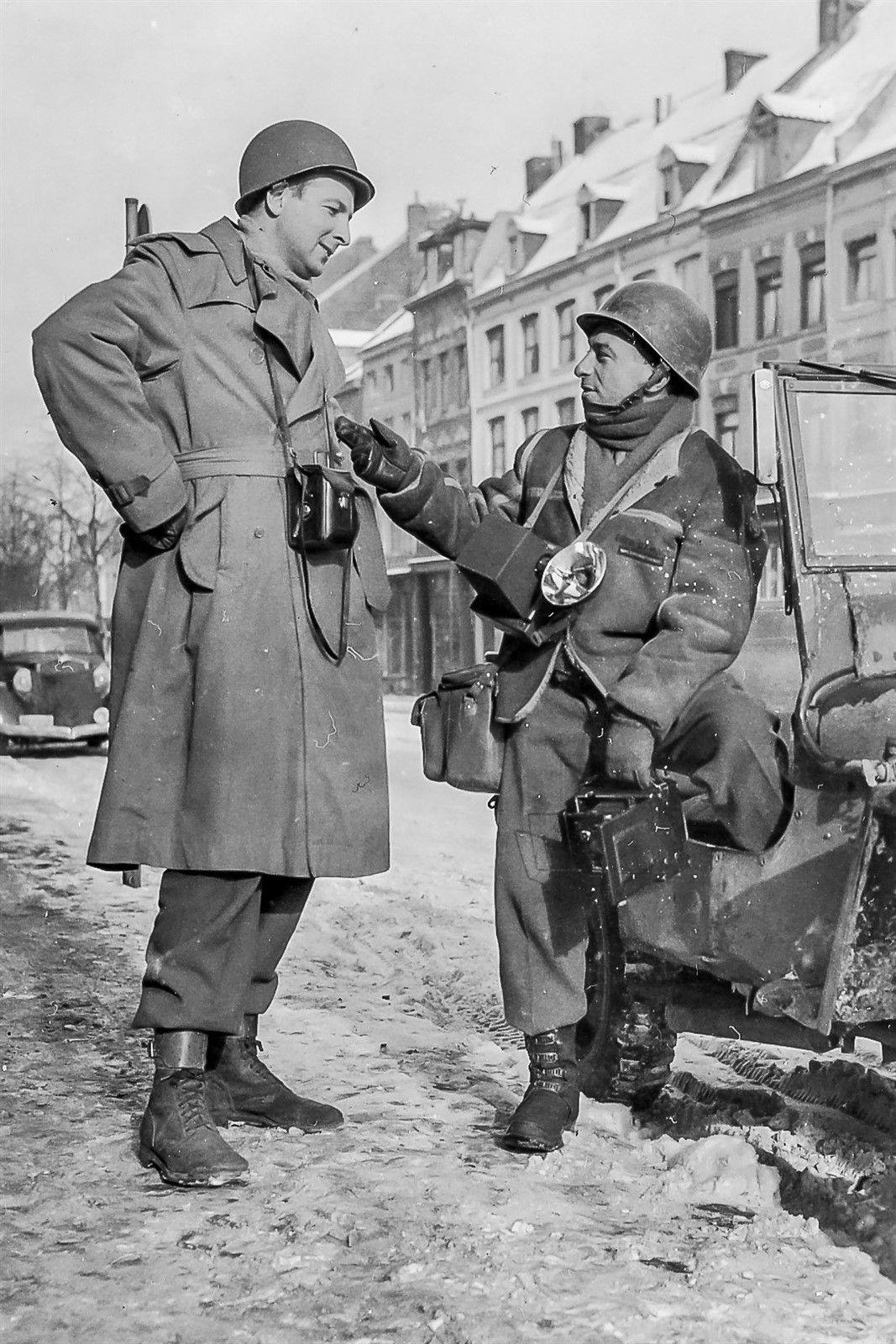 Despite warnings from the War Department about significant shortages in infantry replacements, ETOUSA moved very slowly to establish infantry retraining programs. ETOUSA also failed to establish an independent replacement system in accordance with War Department directives. This failure contributed enormously to both quantity and quality problems within the theater replacement system. Finally, the inaccuracy of the casualty estimates of the ETOUSA staff, used to project personnel requirements, produced very undesirable results in the actual operation of the replacement system. It was no secret to the War Department in early 1944 that a serious shortage of infantry replacements was looming. From late 1943 onward, the War Department had directed all theaters to conserve manpower and begin conversion programs to produce infantry replacements.
Despite warnings from the War Department about significant shortages in infantry replacements, ETOUSA moved very slowly to establish infantry retraining programs. ETOUSA also failed to establish an independent replacement system in accordance with War Department directives. This failure contributed enormously to both quantity and quality problems within the theater replacement system. Finally, the inaccuracy of the casualty estimates of the ETOUSA staff, used to project personnel requirements, produced very undesirable results in the actual operation of the replacement system. It was no secret to the War Department in early 1944 that a serious shortage of infantry replacements was looming. From late 1943 onward, the War Department had directed all theaters to conserve manpower and begin conversion programs to produce infantry replacements.
It issued a formal directive in May 1944 that required theaters to establish manpower conservation programs. ETOUSA treated this directive with little urgency and until 1945 its retraining efforts were crisis driven. The results of such execution were less than ideal. Reacting to a crisis meant that units had to endure long delays while replacements were rounded up, trained, and then rushed to the front. Urgency meant that many converted infantrymen received only the most rudimentary instruction. The Gen George S. Patton’s 3-A took matters into his own hands and converted large numbers of his service troops to riflemen.
He eventually converted 10% of his army overhead into infantry replacements, apparently with little reduction in the efficiency of services. Other commanders soon followed his example. The reason for much of the foot dragging related to a second portion of the May directive. The directive ordered the establishment of an independent theater replacement command that answered directly to the theater commander. This was in response to experiences in the Mediterranean Theater of Operations (MTO), where diversion of combat replacements into service units was rampant. In the MTO the Supply of Services (SOS), operated the replacement system. SOS base section commanders routinely diverted infantry personnel to form provisional service units.
The situation was little different in the ETO. Instead of an independent replacement command, the ETO replacement system was under the supervision of the ETO SOS commander. Gen Lee had little motivation to provide infantry replacements from the ranks of his service force units. Infantry personnel were also diverted to meet SOS requirements in the ETO, though not to the extent of that experienced in the MTO.
After the United States’ declaration of war in 1941, the War Department had difficulty recruiting infantry branch volunteers, namely due to the fact that of all Soldiers, it was recognized that the infantryman continuously operated under the worst conditions and performed a mission that was not assigned to any other Soldier or unit, the infantry, a small portion of the total Armed Forces, was suffering the most casualties while receiving the least public recognition.
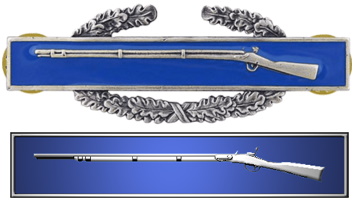
 On Oct 27, 1943, the War Department formally established the Combat Infantryman Badge (CIB) and the Expert Infantryman Badge (EIB) awards in Section I, War Department Circular 269 (Oct 27, 1943) The present war has demonstrated the importance of highly-proficient, tough, hard, and aggressive infantry, which can be obtained only by developing a high degree of individual all-around proficiency on the part of every infantryman. As a means of attaining the high standards desired and to foster esprit de corps in infantry units; the Expert Infantryman and the Combat Infantryman badges are established for infantry personnel. Moreover, War Department Circular 269 stipulated that only one of these badges will be worn at one time and the Combat Infantryman badge is the highest award; the awarding of the CIB was officially authorized with an executive order dated November 15 1943; later, on June 10 1944, the US Congress approved an extra ten dollars in monthly pay to every infantryman awarded the CIB—excepting commissioned officers.
On Oct 27, 1943, the War Department formally established the Combat Infantryman Badge (CIB) and the Expert Infantryman Badge (EIB) awards in Section I, War Department Circular 269 (Oct 27, 1943) The present war has demonstrated the importance of highly-proficient, tough, hard, and aggressive infantry, which can be obtained only by developing a high degree of individual all-around proficiency on the part of every infantryman. As a means of attaining the high standards desired and to foster esprit de corps in infantry units; the Expert Infantryman and the Combat Infantryman badges are established for infantry personnel. Moreover, War Department Circular 269 stipulated that only one of these badges will be worn at one time and the Combat Infantryman badge is the highest award; the awarding of the CIB was officially authorized with an executive order dated November 15 1943; later, on June 10 1944, the US Congress approved an extra ten dollars in monthly pay to every infantryman awarded the CIB—excepting commissioned officers.
The WWII regulations did not formally prescribe a specific combat service period establishing the infantryman’s eligibility for being awarded a Combat Infantryman Badge, thus, in 1947, the US Government implemented a policy authorizing the retroactive awarding of the Bronze Star Medal to World War II veteran soldiers who had been awarded the Combat Infantryman Badge, because the CIB was awarded only to soldiers who had borne combat duties befitting the recognition conferred by a Bronze Star Medal. Both awards required a commander’s recommendation and a citation in the pertinent orders. Gen Marshall initiated this after Medal of Honor recipient Maj Charles W. Davis noted to him that : It would be wonderful, if someone could design a badge for every infantryman who faces the enemy, every day and every night, with so little recognition. The War Department Circular 105, dated March 13 1944 amended WD Circular 269. Page 2, paragraph IV. BADGE – Section 1, Circular No. 269 War Department, 1943, is amended by adding paragraph 8 as follows : 8. Retroactive award of Expert and Combat Infantryman badges may be awarded to any infantryman who, on or after December 6 1941, has established eligibility and been recommended for such award under the provisions of paragraph 2b or paragraph 3b. The Expert Infantryman badge may be awarded under paragraph 2a, only to those infantryman who have established eligibility and been recommended for such award on or after October 27 1943.
From the beginning, Army leaders have taken care to retain the badge for the unique purpose for which it was established and to prevent the adoption of any other badge which would lower its prestige.
 At the close of World War II, the largest war in which armor and artillery played key roles in the ground campaigns, a review was conducted of the Combat Infantry Badge criteria with consideration being given to creating either additional badges or authorizing the badge to cavalry and armor units. The review noted that any change in policy would detract from the prestige of the badge. It was not until January 1945 that the ETO replacement system became an independent operation. Gen Ben Lear, previously the AGF Commander, assumed command and quickly produced results. From January to May 1945 the replacement system converted almost 100.000 soldiers into combat replacements. The quality of these replacements was decidedly mixed. The natural response of any unit tasked to provide personnel was to use the opportunity to rid itself of its worst soldiers. Commanders in the combat zone were quick to note the poor quality of many of the converted riflemen. An inspection in April 1945 of the records of 514 men released by the AAF revealed a total of 231 court-martials. Fortunately for American combat units, by this point in the war the German Army was facing much greater challenges providing replacements for its own hard-pressed combat units. One major contributor to the infantry replacement shortage was the difficulty in accurately predicting personnel requirements.
At the close of World War II, the largest war in which armor and artillery played key roles in the ground campaigns, a review was conducted of the Combat Infantry Badge criteria with consideration being given to creating either additional badges or authorizing the badge to cavalry and armor units. The review noted that any change in policy would detract from the prestige of the badge. It was not until January 1945 that the ETO replacement system became an independent operation. Gen Ben Lear, previously the AGF Commander, assumed command and quickly produced results. From January to May 1945 the replacement system converted almost 100.000 soldiers into combat replacements. The quality of these replacements was decidedly mixed. The natural response of any unit tasked to provide personnel was to use the opportunity to rid itself of its worst soldiers. Commanders in the combat zone were quick to note the poor quality of many of the converted riflemen. An inspection in April 1945 of the records of 514 men released by the AAF revealed a total of 231 court-martials. Fortunately for American combat units, by this point in the war the German Army was facing much greater challenges providing replacements for its own hard-pressed combat units. One major contributor to the infantry replacement shortage was the difficulty in accurately predicting personnel requirements.
The ETO was not unique in failing to correctly estimate the numbers of infantrymen it would need for future operations. Both the MTO and Southwest Pacific Area (SWPA) also underestimated infantry requirements. From a simple numbers standpoint the ETO staff provided very accurate estimates for total casualties. The theater estimates for total casualties were 130% of actual requirements. The projected figures for June and July of 1944 were 116% of actual requirements. Unfortunately, planners missed widely on the percentage of casualties by branch, particularly in regards to infantry requirements. Theater planners projected infantry loss rates of approximately 65 to 70%. Actual rates exceeded 80% and at times 90%. Infantry losses were therefore underestimated while almost all other branches were overestimated. This produced a worst case situation in the replacement system. Production of trained soldiers in the United States was geared to the long range theater estimates and required six to eight months to react to changes. In the ETO the replacement depots became overcrowded with soldiers in specialties that were in low demand, thus creating miserable living conditions for soldiers. Converting these soldiers to infantrymen burdened the limited training resources and created morale problems among the converted soldiers. The entire situation was a very messy one for those charged with actual operation of the replacement system.
Such inaccuracy was understandable given the conditions of the time. Planners only had limited historical data from the MTO and World War I to draw upon and they did not enjoy the benefit of computers to help project estimates.
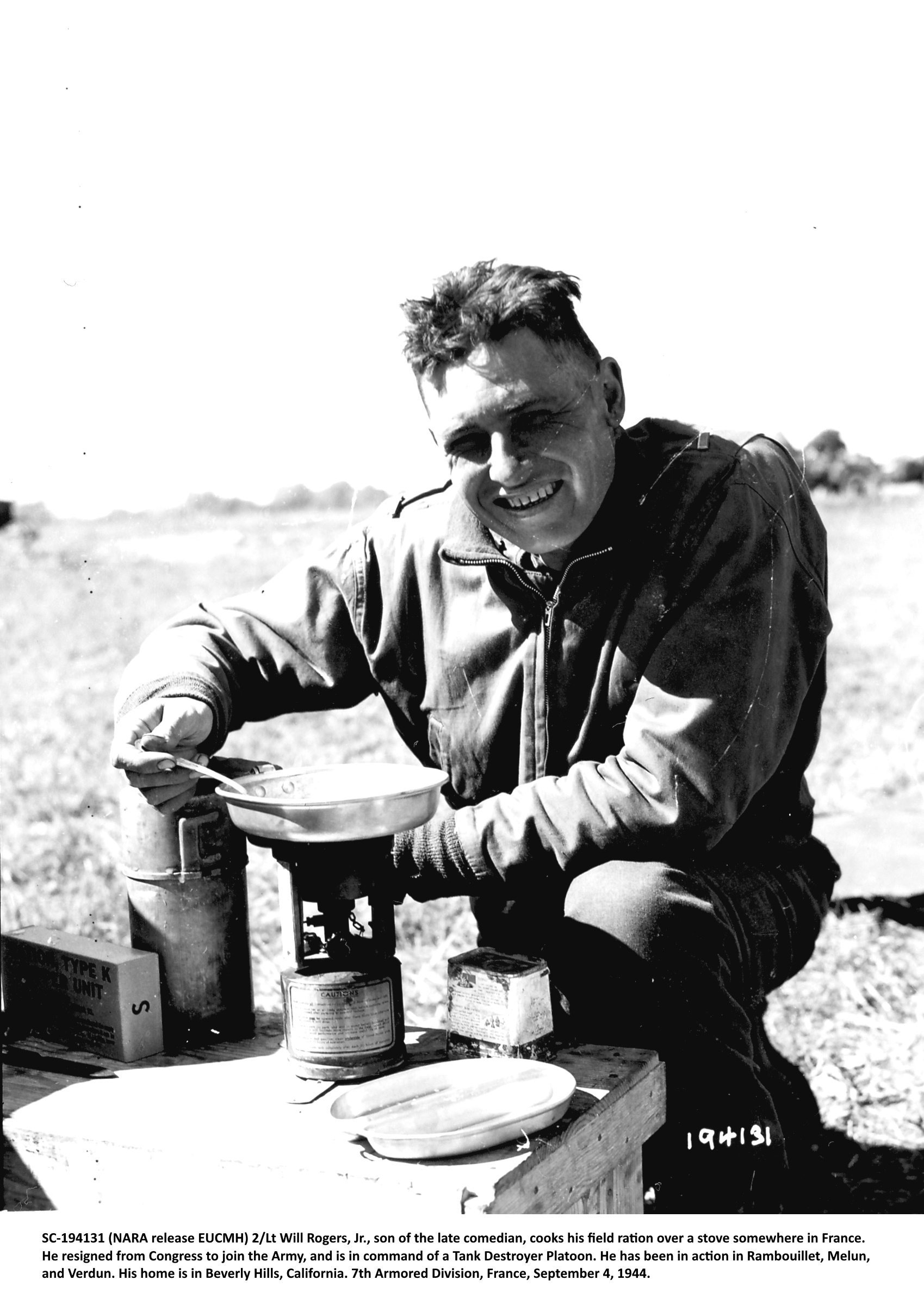 Given the large size of the ETO force even small inaccuracies in percentages could produce significant shortfalls or overages in personnel The underestimation of infantry losses was most keenly felt in the first four months following the Normandy landings. ETOUSA quickly revised its personnel projections to represent a more accurate demand for infantry replacements. However, the War Department could do little to change the composition of soldiers already in the replacement channels. To quickly make up the infantry shortfall the War Department had to once again rob existing infantry divisions of trained personnel to provide individual replacements. The domino effect of such actions was to slow the overseas movement of fresh divisions. It also meant that those divisions stripped for replacements deployed overseas with a very poor training standard. The ill-fated 106th Infantry Division, which disintegrated during the German Ardennes offensive was one such division.
Given the large size of the ETO force even small inaccuracies in percentages could produce significant shortfalls or overages in personnel The underestimation of infantry losses was most keenly felt in the first four months following the Normandy landings. ETOUSA quickly revised its personnel projections to represent a more accurate demand for infantry replacements. However, the War Department could do little to change the composition of soldiers already in the replacement channels. To quickly make up the infantry shortfall the War Department had to once again rob existing infantry divisions of trained personnel to provide individual replacements. The domino effect of such actions was to slow the overseas movement of fresh divisions. It also meant that those divisions stripped for replacements deployed overseas with a very poor training standard. The ill-fated 106th Infantry Division, which disintegrated during the German Ardennes offensive was one such division.
A summary of the strategic level manning decisions does not reveal an ideal situation for the operational and tactical commanders in the ETO. War Department and ETOUSA decisions resulted in an infantry force that would go into combat with a small number of divisions suffering from a lack of high quality soldiers and sustained by a replacement system that could not provide adequate numbers of riflemen. To maintain combat operations soldiers had to be hastily trained as infantrymen and stateside divisions had to be stripped of personnel to serve as individual replacements. The influence on the morale of the converted soldiers as well as that on the soldiers pulled from their units was almost certainly negative.
The Operational Environment
At the operational level of war there were two important influences on the manning system. The first consisted of the command and control relationship between operational commanders and the theater replacement system. The second comprised the actual operation of the theater replacement system. Involved in this relationship were three types of organizations. Those organizations included the headquarters at the army group and field army levels and the Ground Forces Replacement Command (GFRC) which actually operated the ETO replacement system. The army group headquarters provided the long range estimates for replacement requirements and recommended allocation of replacements to the field armies. The field armies were the primary operational headquarters involved in the requisitioning and distribution of replacements to the divisions. The GFRC operated the theater replacement system and additionally performed a special staff function in the ETOUSA headquarters. At the highest level of operational command and control were found the two US Army group headquarters: the 12-AG (Bradley) and the 6-AG (Devers). Next came the field armies, of which there were eventually five: the 1-A (Hodges), the 3-A (Patton), the 7-A (Clark), the 9-A (Simpson), and the 15-A (Gerow).
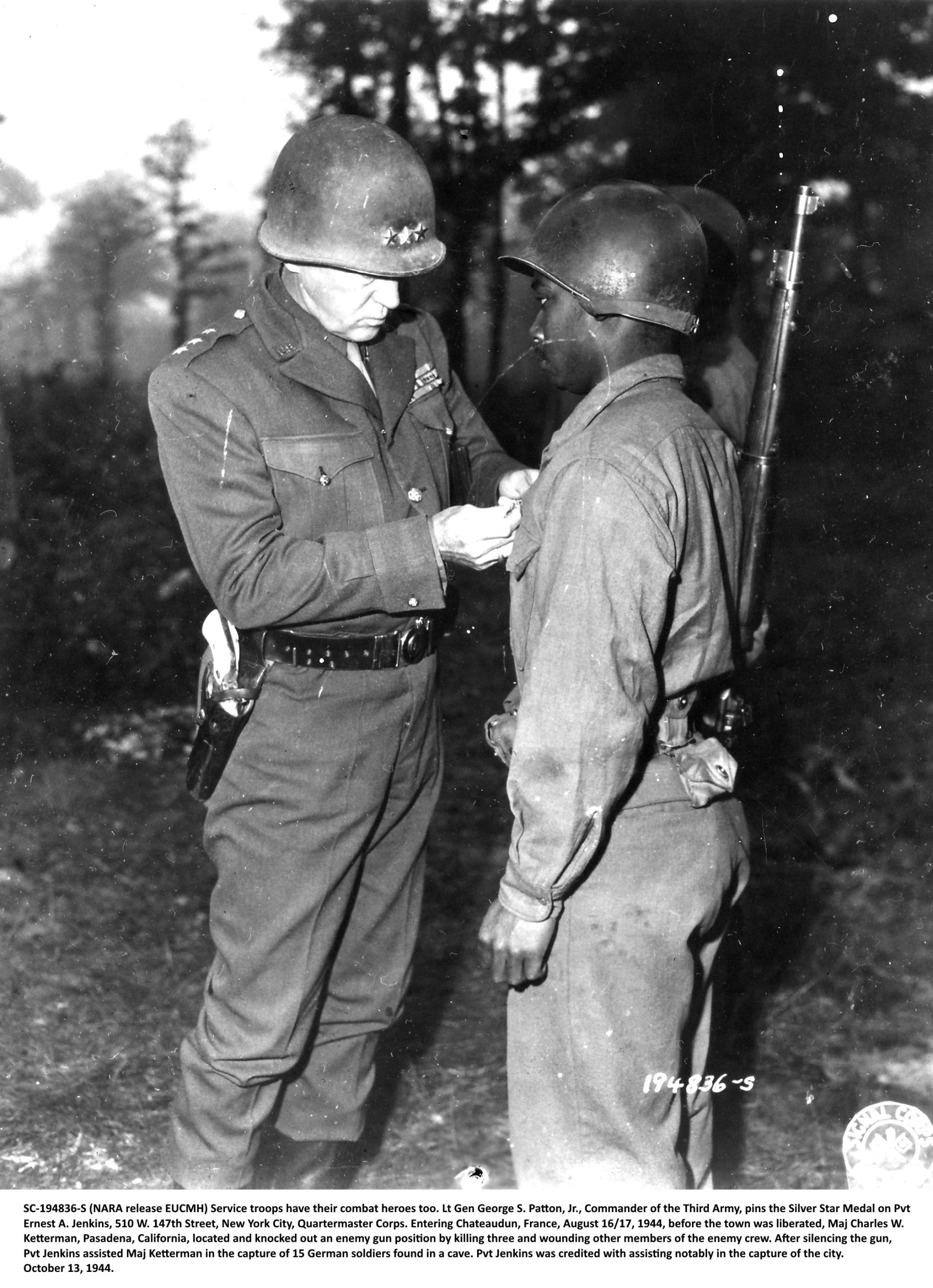 Gen Norman Cotas’s 28th Infantry Division was primarily a subordinate unit of Hodges’ 1-A, although it also served with Patton’s 3-A, Clark’s 7-A, and Gerow’s 15-A. The final element at the operational level was by far the most influential with regards to manning. The GFRC controlled not only replacements, but also convalescent soldiers and at any given time commanded over 200.000 personnel. By war’s end, more than 2.000.000 personnel passed through the GFRC, or more than half of the theater’s total strength. Operations within the GFRC determined the numbers of soldiers that arrived at combat units as well as having a significant influence on the quality of those replacements. Except for a brief period during and immediately after the D-Day landings, the army group and field army headquarters did not exercise command over any portion of the GFRC. There were limits as to what the operational commanders could do to influence the manning of their subordinate units. This is not to say that their influence was minimal, for this was far from the truth. These commanders determined the distribution of replacements to their subordinate units, controlled the rotation of divisions between combat and quiet areas, and provided valuable support to the subordinate elements of the GFRC.
Gen Norman Cotas’s 28th Infantry Division was primarily a subordinate unit of Hodges’ 1-A, although it also served with Patton’s 3-A, Clark’s 7-A, and Gerow’s 15-A. The final element at the operational level was by far the most influential with regards to manning. The GFRC controlled not only replacements, but also convalescent soldiers and at any given time commanded over 200.000 personnel. By war’s end, more than 2.000.000 personnel passed through the GFRC, or more than half of the theater’s total strength. Operations within the GFRC determined the numbers of soldiers that arrived at combat units as well as having a significant influence on the quality of those replacements. Except for a brief period during and immediately after the D-Day landings, the army group and field army headquarters did not exercise command over any portion of the GFRC. There were limits as to what the operational commanders could do to influence the manning of their subordinate units. This is not to say that their influence was minimal, for this was far from the truth. These commanders determined the distribution of replacements to their subordinate units, controlled the rotation of divisions between combat and quiet areas, and provided valuable support to the subordinate elements of the GFRC.
As previously discussed, there were also times when these commanders took replacement matters into their own hands to produce much needed riflemen. The distribution of replacement personnel at the operational level was fairly straight forward. ETOUSA allocated personnel among the field armies based on the strategic situation in the theater. The army group headquarters provided the ETOUSA G-1 with personnel estimates that ranged out 60 to 90 days and recommended a distribution plan for the allocation of replacements. Prior to July 14 1944, the 1-A and the 3-A enjoyed the highest priority for replacements. After that date, with a few exceptions, replacements were normally divided evenly among the armies. Supporting each field army, was a replacement depot. The field army coordinated directly with this depot to control the distribution of replacements to the subordinate divisions. The corps headquarters had very little administrative responsibilities and did not participate directly in the allocation of replacement personnel.
While the system of distribution was relatively simple in concept, it was not well liked by operational commanders. For much of the war Gen Bradley fought a losing battle to have command and control over the forward elements of the GFRC placed in the hands of his field army commanders. Commanders cited poor responsiveness, needless complications, and general mismanagement by the replacement depots as justification for their request. To further support the request, Gen Bradley pointed to the efficiency of replacement operations during the period of June to October 1944, when the 1-A and the 3-A exercised command and control over the forward replacement battalions of the GFRC. These battalions were generally able to fill personnel requisitions within 24 to 48 hours. Further, the battalions were stocked primarily with combat replacements and at a level that did not greatly strain the unit’s holding capacity.
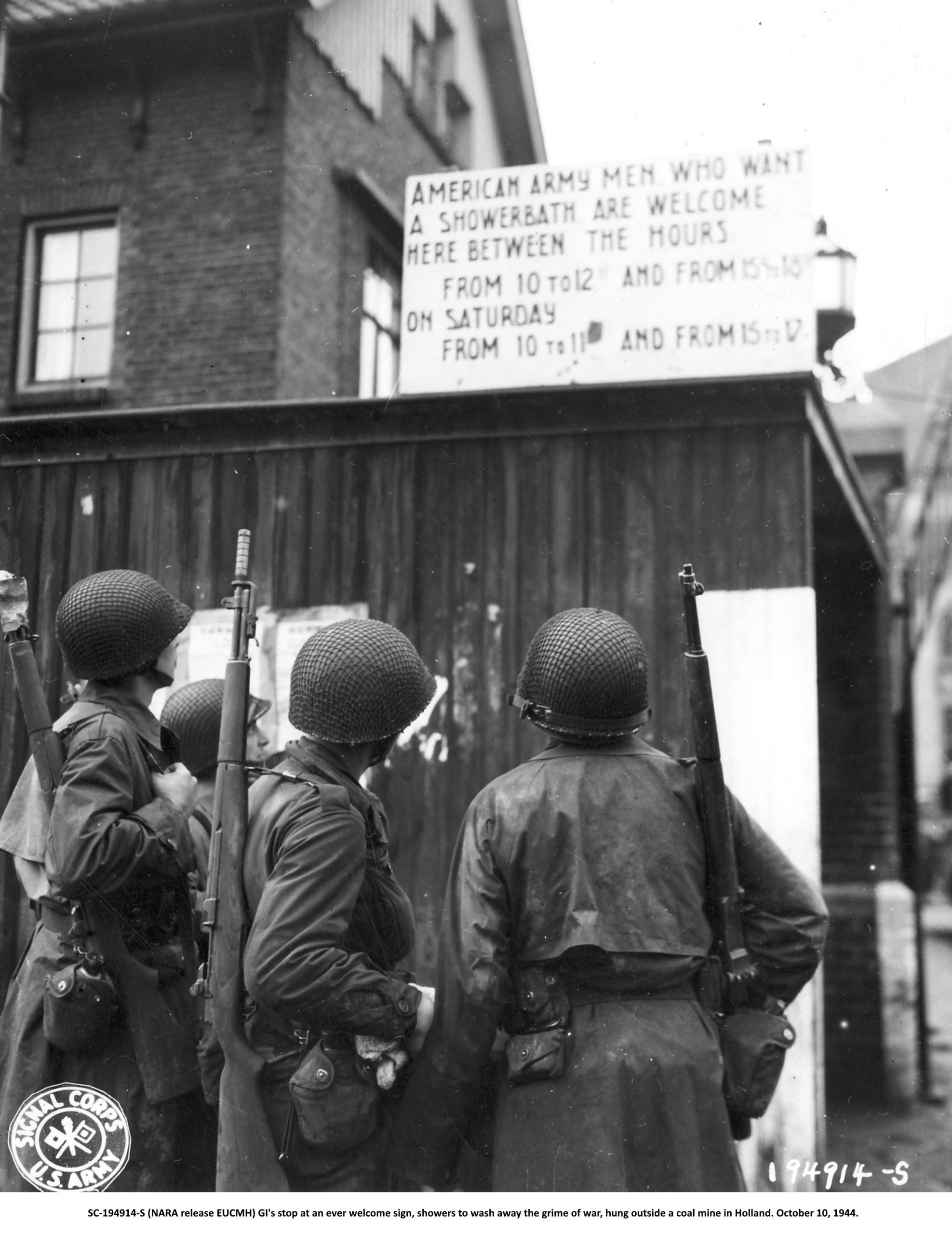 This changed significantly when the GFRC regained control over the forward battalions. The army’s postwar replacement board concluded: The simplicity which characterized operations under army control was replaced with delays and operational complications. Almost immediately, instead of maintaining a stockage of approximately 10.000 combat-type replacements, the 3rd Replacement Depot became a depository for about 19.000 replacements, mostly SOS-type personnel, in order to ease the load on Replacement Depots in the Communications Zone. Throughout the remaining period of hostilities although the 3rd Replacement Depot’s strength averaged 15.000 it was seldom that the number of Infantry replacements available for assignment at any given time equaled 2.000.
This changed significantly when the GFRC regained control over the forward battalions. The army’s postwar replacement board concluded: The simplicity which characterized operations under army control was replaced with delays and operational complications. Almost immediately, instead of maintaining a stockage of approximately 10.000 combat-type replacements, the 3rd Replacement Depot became a depository for about 19.000 replacements, mostly SOS-type personnel, in order to ease the load on Replacement Depots in the Communications Zone. Throughout the remaining period of hostilities although the 3rd Replacement Depot’s strength averaged 15.000 it was seldom that the number of Infantry replacements available for assignment at any given time equaled 2.000.
Additionally, the field army commanders were powerless to convert this large stockage of personnel into potential infantry replacements. The army also had to provide valuable transportation to move this large number of men. At one point during the German Ardennes offensive, Hodge’s 1-A had to provide sorely needed trucks to move 11.000 service troop replacements out of the route of the German advance. These replacements were deemed incapable of operating as combat soldiers. The issue of return to duty soldiers was also a powerful motivator for commanders to seek control of the forward replacement units. This issue was a very emotional subject for both commanders and soldiers. If soldiers had to return to the fighting, they wanted to do so with their old units. Commanders certainly wanted to get these veterans back into their ranks. Such a return policy received widespread support from division, corps, and field army commanders. There was somewhat less support at the army group and ETOUSA headquarters. The GFRC was dead set against total support of such a policy reasoning that always returning soldiers to their units created overages in some divisions while shortages existed in others. Commanders argued that an overage condition was normally very temporary condition and was an acceptable price in return for the increased efficiency and morale of soldiers. GFRC agreed to return soldiers to units whenever possible, but was not willing to agree to a total return policy.
Soldiers and units often took matters into their own hands. Soldiers frequently went AWOL (Absent Without Leave) from replacement depots to return to their original companies, counting on support from their commanders to smooth out the disciplinary problems. Divisions often exchanged soldiers to see that they returned to their original units. Some divisions went so far as to assign an officer to the replacement depot; his mission was to massage the system to ensure that soldiers returned to their units, as well as keeping as close eye on the quality of soldiers assigned to the division.
 In January 1945, the GFRC finally bowed to pressure and agreed to automatically return hospitalized soldiers to their former units, even if no valid requirement existed. Despite compelling arguments, Gen Eisenhower denied the requests of his commanders to place the GFRC battalions under the control of the field armies. He concluded that personnel in the GFRC constituted a strategic reserve, which could be shifted to influence the outcome of operations throughout the theater. This concept was not very well thought out. Replacement personnel, while large in numbers, lacked significant combat power. They were not organized in cohesive units, did not possess heavy weapons, and except for returning veterans, lacked combat experience. From the standpoint of being able to weight the strategic main effort with replacements, there was some validity in this argument. Simply weighting the flow of replacements did not require the GFRC to retain control over the forward battalions. The end result was a command and control arrangement that did not fully support operational requirements.
In January 1945, the GFRC finally bowed to pressure and agreed to automatically return hospitalized soldiers to their former units, even if no valid requirement existed. Despite compelling arguments, Gen Eisenhower denied the requests of his commanders to place the GFRC battalions under the control of the field armies. He concluded that personnel in the GFRC constituted a strategic reserve, which could be shifted to influence the outcome of operations throughout the theater. This concept was not very well thought out. Replacement personnel, while large in numbers, lacked significant combat power. They were not organized in cohesive units, did not possess heavy weapons, and except for returning veterans, lacked combat experience. From the standpoint of being able to weight the strategic main effort with replacements, there was some validity in this argument. Simply weighting the flow of replacements did not require the GFRC to retain control over the forward battalions. The end result was a command and control arrangement that did not fully support operational requirements.
While command and control of replacement operations was not to the satisfaction of the operational commanders, there still existed a fairly workable relationship between most field armies and their replacement depots. The depots had to count on the field armies to provide much in the way of logistical support, particularly transportation. The field armies had a vested interest in the depots operating as efficiently as possible. As the war progressed it also became clear that the depots needed a great deal of assistance in training replacement personnel. Almost all of the field armies developed some form of training support package to work with the depots. Simpson’s 9-A continually rotated combat veterans to help train personnel in its supporting depot. These training teams provided avaluable boost to the confidence of soldiers soon to enter combat units, just providing an opportunity for replacements to ask questions of the veterans was beneficial. If the training teams could also provide much needed individual skills training so much the better.
The rotation and rest of divisions was a major influence on the manning situation in infantry units. Control of this rotation normally rested with the field army commanders and it was certainly one of the most difficult tasks that confronted them during the war. There were simply too few divisions with which to meet their assigned missions. During the 318 days of combat in the ETO, there were six divisions that exceeded 270 days of combat and a further six divisions that exceeded 240 days. The 2nd Infantry Division was out of combat for only thirteen days in eleven months. By these standards the 28th Infantry Division was not a hard pressed division; it spent 196 out of a possible 267 days in combat. Many of the divisions that arrived later in the war were equally active.
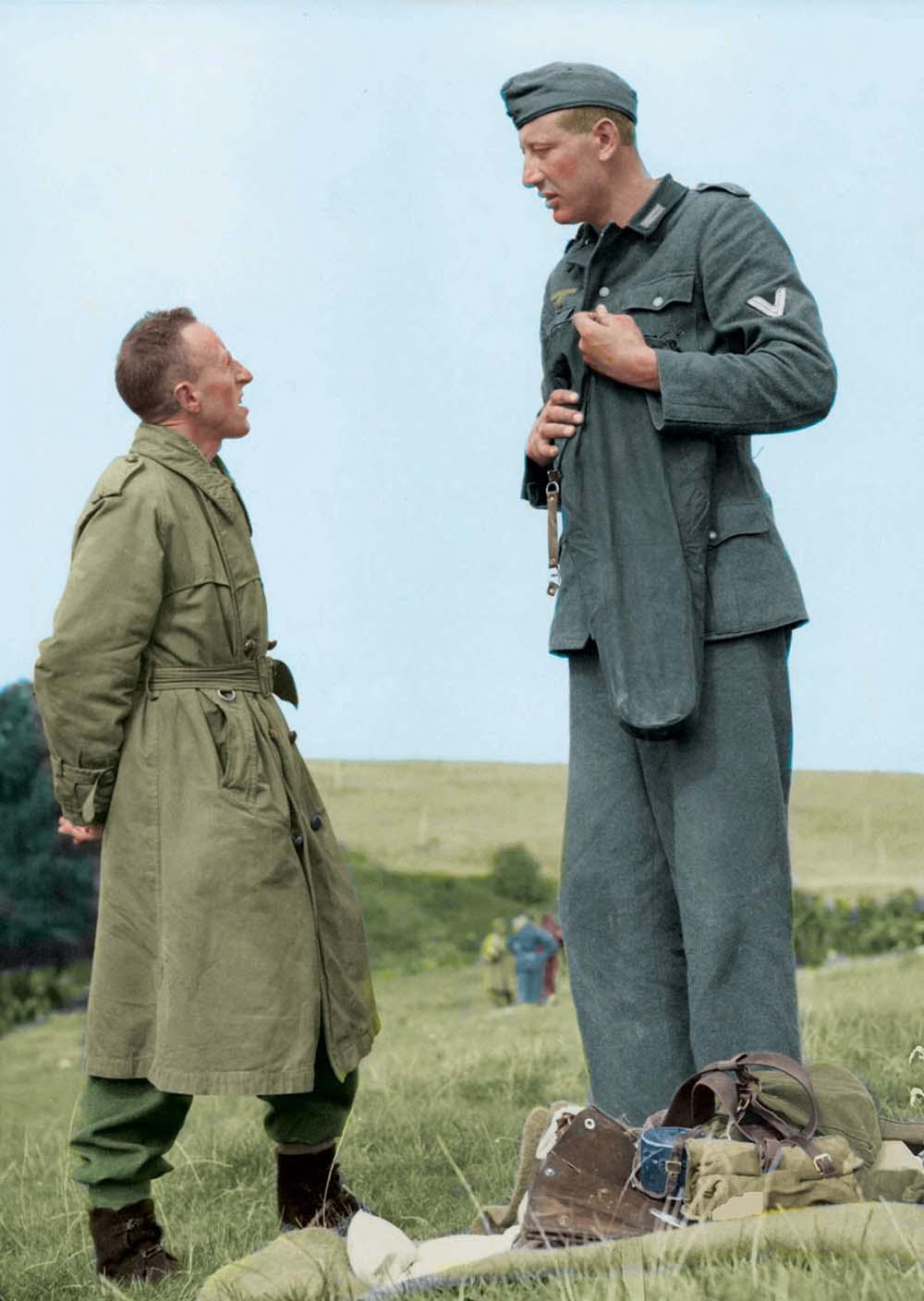 The 104th Infantry Division, which entered combat in late October, fought for 178 days out of a possible 196. The ideal situation was obviously to have sufficient forces on hand to periodically pull units from the line and place them in relatively safe corps or army assembly areas. Preferably, the field army or corps commander would rotate the division before it suffered excessive casualties and soldiers became completely exhausted. This would conserve a considerable portion of the division’s fighting power and allow it to quickly regain maximum efficiency. During these rest periods a division would integrate new personnel and conduct individual and unit training. Ideally, replacements would form only a small portion of the unit’s strength, not the large percentage so common in the ETO during the war. Gen Walter M. Robertson, commander of the 2nd Infantry Division, believed that a return to the old square division organization would achieve many of these standards. Furthermore, he felt that such a change would improve the efficiency of the division’s infantrymen by 30 percent.
The 104th Infantry Division, which entered combat in late October, fought for 178 days out of a possible 196. The ideal situation was obviously to have sufficient forces on hand to periodically pull units from the line and place them in relatively safe corps or army assembly areas. Preferably, the field army or corps commander would rotate the division before it suffered excessive casualties and soldiers became completely exhausted. This would conserve a considerable portion of the division’s fighting power and allow it to quickly regain maximum efficiency. During these rest periods a division would integrate new personnel and conduct individual and unit training. Ideally, replacements would form only a small portion of the unit’s strength, not the large percentage so common in the ETO during the war. Gen Walter M. Robertson, commander of the 2nd Infantry Division, believed that a return to the old square division organization would achieve many of these standards. Furthermore, he felt that such a change would improve the efficiency of the division’s infantrymen by 30 percent.
These ideal conditions seldom seemed to occur in the ETO. Rotation appeared to be based on almost complete exhaustion of a division’s fighting strength. In the fall of 1944 Gen Marshall became concerned with the fatigue becoming so prevalent in American divisions. He offered Gen Eisenhower a possible solution to the rotation problem. He proposed sending infantry regiments from the stateside divisions, less much of their heavy equipment, to the ETO ahead of their divisions. The regiments could then be used to rotate weary regiments into rest areas while they obtained valuable combat experience. Without heavy equipment these regiments could move overseas very rapidly. Eisenhower embraced the plan and several regiments moved quickly to Europe. The results were not what the two senior leaders hoped for; instead of using the regiments for rotation purposes, field army commanders all too often provided them with combat support and service support units and then assigned them a sector.
This allowed veteran regiments to resume offensive operations in other areas. Gen Eisenhower abandoned the program by the end of 1944. Fighting in the Huertgen Forest, where the 28th Infantry Division and other divisions were so badly mauled, illustrates how far divisions were pushed prior to relief. The ability to push forward huge numbers of individual replacements during combat masked the true condition of the division’s infantry units.
The 28th received more than 4.500 officer and soldier replacements during the battle. The inaccuracy of the division’s daily assessments of fighting efficiency did not help matters. As late as November 6 1944, when the 28-ID had already suffered tremendous casualties and units were disintegrating, the division still reported a combat efficiency rating of excellent to its higher headquarters. In fact, the rating never dropped below the level of good throughout the battle. Whether this inaccurate assessment reflected poor staff work or a chain of command that did not want to hear bad news is uncertain.
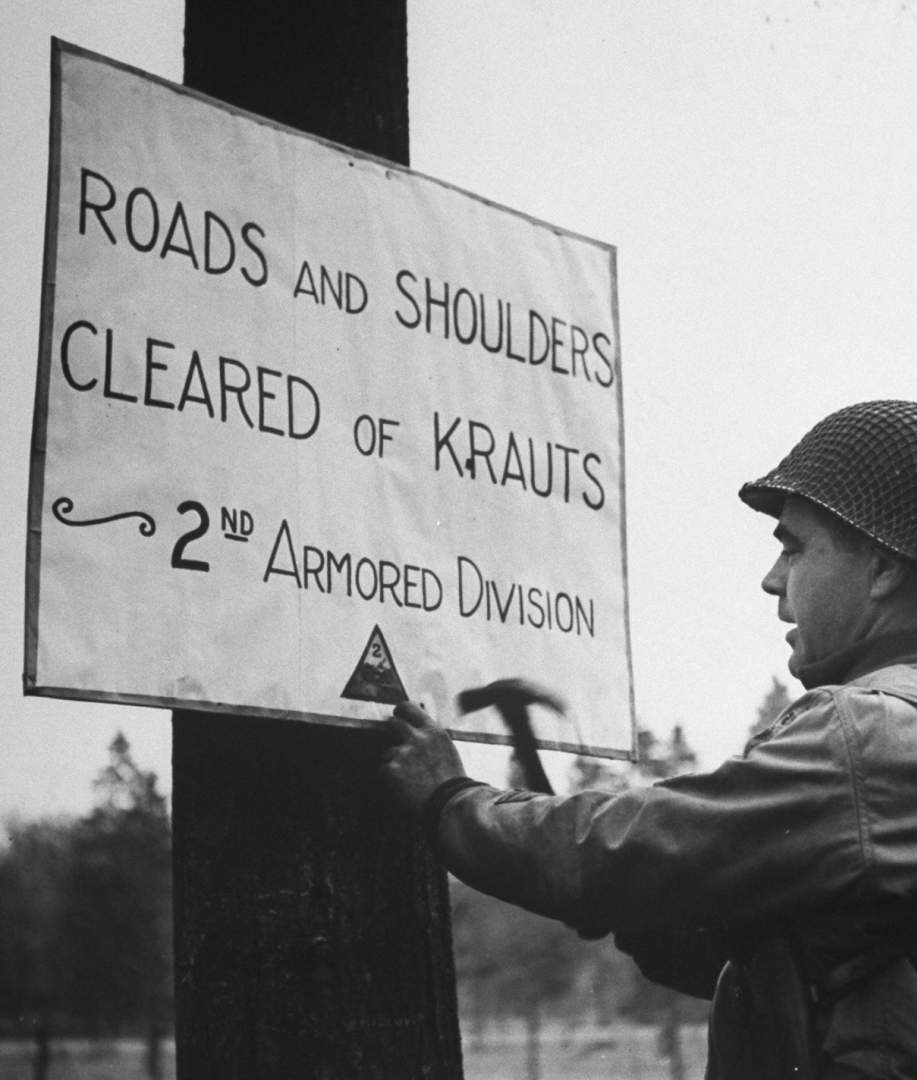 There was definitely a perceptible accuracy gap and time lag in the information that the 1-A Commander, Gen Courtney Hodges, received concerning the fighting. When Gen Cota requested permission to discontinue the attack and withdraw across the Kall River Gorge , Gen Hodges reluctantly granted permission. He followed this approval up with a suggestion to the corps commander that Gen Cota be relieved of command. Sacking division commanders was a frequent occurrence in the 1-A. The 3-A Commander, Gen George S. Patton, held a somewhat different view on the fighting capacity of infantry units. He believed that an infantry unit was capable of about 60 hours of fighting. Beyond that point it was too exhausted to continue. In the Huertgen Forest, even 60 hours may have been too long, but it was probably a more realistic standard for relief than one based simply on terrain objectives or friendly casualties. Prompt relief of the 28-ID by a fresh division after 60 hours of fighting, roughly during the afternoon of November 4, might have aitered the outcome of the fighting in the Forest. It would not, however, have prevented the loss of Schmidt to the German counterattack on the early morning of November 4.
There was definitely a perceptible accuracy gap and time lag in the information that the 1-A Commander, Gen Courtney Hodges, received concerning the fighting. When Gen Cota requested permission to discontinue the attack and withdraw across the Kall River Gorge , Gen Hodges reluctantly granted permission. He followed this approval up with a suggestion to the corps commander that Gen Cota be relieved of command. Sacking division commanders was a frequent occurrence in the 1-A. The 3-A Commander, Gen George S. Patton, held a somewhat different view on the fighting capacity of infantry units. He believed that an infantry unit was capable of about 60 hours of fighting. Beyond that point it was too exhausted to continue. In the Huertgen Forest, even 60 hours may have been too long, but it was probably a more realistic standard for relief than one based simply on terrain objectives or friendly casualties. Prompt relief of the 28-ID by a fresh division after 60 hours of fighting, roughly during the afternoon of November 4, might have aitered the outcome of the fighting in the Forest. It would not, however, have prevented the loss of Schmidt to the German counterattack on the early morning of November 4.
The effects of such prolonged fighting on the infantry units of the 28-ID will be discussed in more depth shortly. In general, however, prolonged combat was the most harmful factor in the performance of infantry divisions. Enemy resistance, the terrain, weather, and just sheer exhaustion robbed units of their combat efficiency. The more poorly trained the division, the faster the drop in performance. As efficiency dropped casualties increased, particularly among new recruits. The dwindling numbers of veterans were bound to become less and less aggressive as they saw their chances of survival diminishing with each day of combat. This was a vicious circle and even the most highly regarded divisions were not immune to the consequences. In the tough fighting for the city of Aachen the performance of the 1st Infantry Division dropped substantially, even though it received a steady stream of replacements.
One factor that led to divisions remaining so long in combat was the uneven distribution of casualties. While infantry elements absorbed the majority of casualties, the remaining 60% of the division functioned with little loss in casualties and efficiency. It was therefore frustrating to senior army leaders that infantry divisions did not have greater staying power in combat. Despite the failure of Gen Marshall’s regimental rotation scheme for the ETO, the plan for the invasion of Japan included a fourth regiment for each infantry division. This fourth regiment was designed to facilitate a steady rotation of regiments, thus allowing the division to remain in combat longer. This was the solution that Gen Robertson recommended. Such an organization would have closely resembled the old square divisions of pre-World War II vintage. The square division was designed to conduct operations with only a portion of its combat units while the other units followed and prepared to relieve the attacking units. Critics of the fourth regiment plan argued that it would simply lead to increased frontages and more difficult missions for infantry divisions. Given the theater strategy and the limited availability of divisions, army commanders probably did the best possible job in rotating divisions. The use of quiet sectors as rest areas was a necessary gamble although the German Ardennes offensive pointed out the risk of such a policy. It is much less clear, however, whether field army commanders rotated divisions out of combat early enough to avoid needless damage to the infantry units. Incurring excessive casualties made it almost impossible for divisions to regain a high level of combat efficiency in the short rest periods they did receive.












